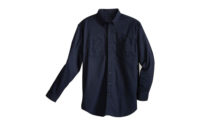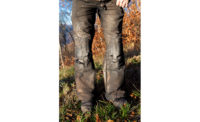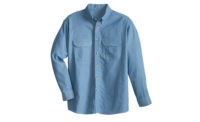There are more options in FR clothing today than ever before. Which option is best? The only way to determine your choice is to administer a proper wear trial. This article discusses best practices to ensure a wear trial results in the best flame-resistant clothing choice for your workers.
Evaluate protection levels needed
FR clothing varies greatly in the protection levels provided, from fabric to fabric and from garment to garment.
The first step in the process is to clearly understand the hazards workers face in a particular facility or working environment. NFPA 70E, the code for electrical safety in the workplace, classifies these hazards in five Hazard Risk Categories (HRC), ranging from 0-4. The Arc Thermal Protection Value (ATPV) of a particular garment determines which HRC level the garment falls into. A thorough arc-flash analysis will indicate which arc-rated garments qualify to provide the safety protection workers must have in a particular facility.
NFPA 2112, on the other hand, is the guide for which EHS managers in oil, gas and other flash-fire prone industries use to determine their FR clothing options. This standard is much more straightforward, as a garment either passes or fails the standard depending on the predicted body burn percentage a worker is exposed to while wearing the clothing. There are a myriad of resources and services available to EHS professionals to help narrow the FR clothing choices for a wear trial based on safety requirements.
Evaluate working environment and tasks
Once required protection levels are established, the next step in narrowing choices for a FR clothing wear trial is to evaluate the environment and tasks of the workers.
Are the conditions hot and are workers exposed to heat-related illness? If so, seek lightweight and breathable fabric options to minimize the risk of heat stress.
Do workers require several tools or devices to complete tasks? Research garment options that offer utilities such as deep pockets, loops and easy access.
What durability is needed? A maintenance worker who performs welding and grinding duties has different durability needs than an electrician.
It’s common to see different needs based on environment and tasks within the same facility. EHS pros can administer wear trials with garments that meet all needs if the safety requirements are met by researching all FR manufacturers.
Determine best employees to participate in the wear trial
Once FR clothing options are funneled based on protection level, working environment, and tasks required by the wearers, choose your best workers to participate. Ideal participants have experience wearing flame-resistant or arc-rated clothing, are knowledgeable about all tasks and varying environments faced by co-workers, and are known for providing valuable feedback to management. They are opinionated and don’t hesitate to give their sincerest points of view.
These veterans have experience and are respected by management and co-workers alike for the work they do and the leadership they provide. These types of individuals are the best candidates to provide unbiased results for safety personnel to evaluate at the conclusion of the wear trial.
Administer the wear trial in an unbiased fashion
Once garment selections and participants are set, produce the most accurate wear trial results by establishing a few parameters.
Choose a timeline — as an example a drilling contractor in South Texas should run the wear trial in the intense heat of July instead of the cold month of January to evaluate the comfort of workers in high temperatures.
If durability is a great concern, choose to do the wear trial during a plant turnaround when heavy mechanical duties are required.
Make the timeline succinct by establishing specific wear trial start and end dates. Participants chosen should wear the garment selections one day at a time and should wear and wash each garment choice the same number of times within the given timeframe.
It’s important that each participant wears all garment choices — if employee A wears one garment and employee B wears another, accurate results cannot be achieved.
Finally, select a measurement device. Most reputable U.S.-based FR manufacturers should provide a standardized survey which allows management to evaluate the results. Otherwise, develop an internal survey that gives precise metrics based on a specific working environment. Combine these metrics with subjective feedback from participants to gather the end results.
Decide on the product of choice
Results provided by the wear test survey, combined with participants’ verbal feedback, will reveal the best FR clothing options for your company. Safety management and purchasing personnel should then evaluate the final selections’ total cost of ownership for a period of several years by considering garment replacements, employee turnover, and longevity of the garments.



